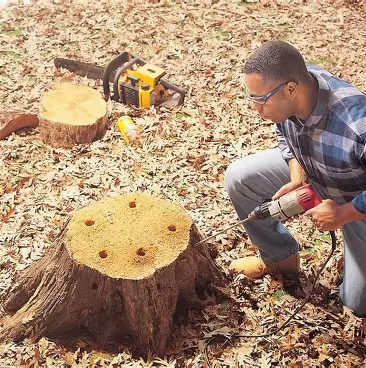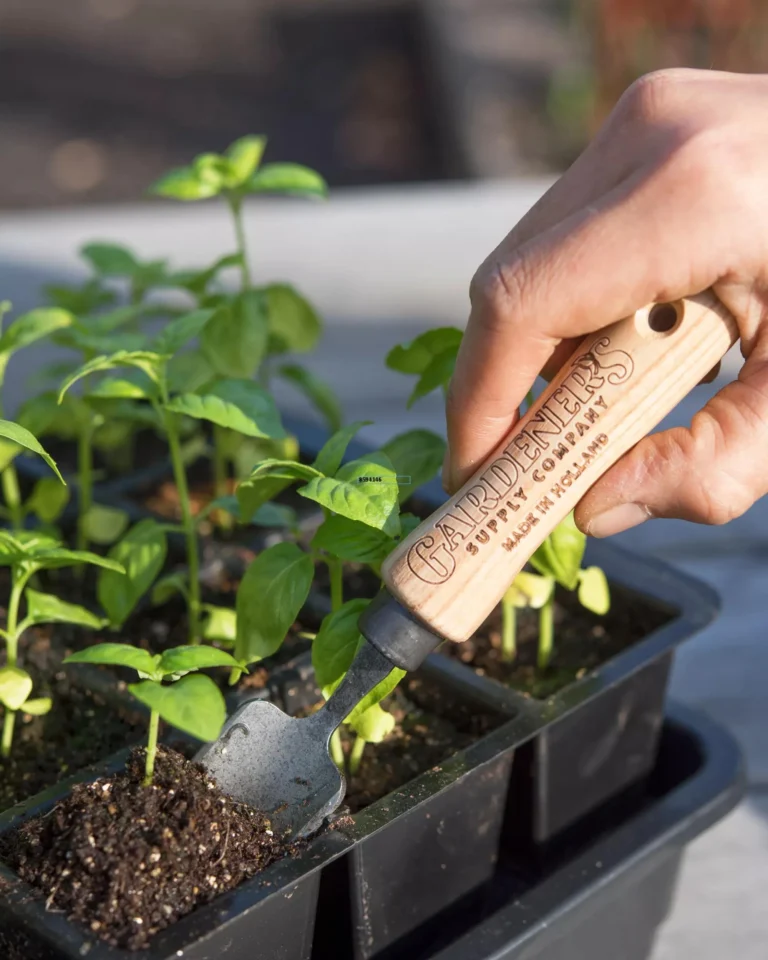How to Get Rid of a Tree Stump
Dead, diseased, and unruly trees often need to be removed, but what about the stump they leave behind? It, too, has to go. Otherwise, the root system may continue to grow, possibly damaging your property’s infrastructure.
On top of that, a rotting trunk will inevitably become a magnet for pests and a tripping hazard for guests. It also makes mowing a pain and drags down the look of the entire space.
Fortunately, there are several ways to remove these eyesores without declaring war on your garden. Let’s explore them down below.

Assess the Situation
Before reaching for the shovel, take a close look at the culprit in question. Large stumps from oaks or maples are particularly challenging. Since they fall on the heavier side, they often require professional intervention or specialised machinery to grind down.
As for smaller remains from birch or cherry trees, you can deal with those yourself, provided that you have the necessary equipment. Don’t forget to check the surrounding area. If the stump is close to other plants or buildings, skip the harsh chemicals to avoid damaging them.
Whatever you do, don’t start digging blindly. To avoid plumbing or electrical disasters, you need to check whether there are underground pipes or wires nearby.
Your local underground utility search service can help you pinpoint and mark the locations of any underlying fittings. Alternatively, you can consult your property’s site plans to track them down yourself.
Choose the Right Approach
Once you’ve assessed the scene and successfully dodged the gas main, it’s time to pick your removal method.
There are three main options that’ll work in this situation. The best approach will depend on your budget and how much elbow grease you’re willing to put into it.
1. Manual Removal
Removing a tree stump by hand is the most affordable solution if you’re on a tight budget and are dealing with a small trunk. But it takes the most time and effort, so make sure you prepare accordingly.
You’ll need a sturdy spade, a sharp axe, a reliable saw, and a lot of patience. Begin by digging a trench, roughly a foot deep, around the base to expose the roots. Then, cut each and every last one to make the removal process easier.
Your trusty saw will slice through the thicker roots effortlessly. As for the smaller, stringy bits, a handy axe will work just fine.
Once you’ve hacked through most of the roots, start rocking the stump back and forth to loosen
it, just like you would with a wobbly tooth.
With a little luck and a lot of pulling, it should come right off. If it’s still firmly stuck, keep pushing it in both directions until you can pry it out of the ground.
2. Stump Grinding
If you can’t be bothered with manual labour, or if the stump is built like a boulder, an electric grinder can save you a lot of effort. These devices are quite handy for removing large trunks that are too tough to pull out manually.
You can rent one from most tool hire shops. But before you fire it up, clear the area of breakable objects, like garden gnomes or greenhouse glass.
Don’t forget your protective gear. Goggles and gloves are a must, whether you’re grinding, chopping, or wrangling roots by hand—better safe than picking splinters out later.
Now that you're all geared up and ready to go, lower the grinder slowly over the top, then move it steadily from side to side. Keep going until all the wood is ground down to a few centimetres below the soil line. You’ll know you’re done when there’s nothing left for your mower to trip over.
3. Chemical Removal
If you’re not in a hurry, chemical-based stump killers can do the heavy lifting for you. Typically made with potassium nitrate, these products speed up the wood decay process, making it much easier to remove.
Start by drilling holes, roughly 2.5 centimetres wide and 20 centimetres deep, across the surface. These will allow the chemical solution to soak in evenly.
Next, pour in the recommended amount as per the product’s usage instructions, then forget about it for a while. It can take several weeks or even a couple of months for the chemicals to break down the trunk, depending on its size.
Once it’s soft and spongy, you should be able to remove it with ease. Though it’s a slow-going approach, it’s often the most convenient solution in tightly packed neighbourhoods where you can’t cause a big fuss.
Responsible Disposal Methods
Getting the stump out is only half the task. You still have to deal with the leftovers.
Some councils impose fines for improper green waste disposal, so check your local regulations to stay on the right side of the law. When in doubt, explore your options for reliable tree surgery services. They’ll take care of the entire process from start to finish.
If you’re determined to handle it yourself, consider turning the leftover wood into mulch using a chipper. The resulting sawdust will help enrich your soil and suppress weeds, all while reducing organic waste.
If you’re feeling crafty, you can repurpose large chunks into garden stools, rustic planters, or quirky stepping stones.
But if you have no use for it, drop off the remains at your local green waste management facility. Some organisations even offer pick-up services for hefty bark, so you don’t have to worry about moving and delivering it.
Conclusion
Getting rid of a tree stump doesn’t have to be a nightmare. Whether you dig it out, grind it down, or let chemistry work its magic, there’s a method for every situation and patience level.
Whichever route you take, don’t forget to deal with the remaining debris. You can mulch it, repurpose it, or hand it off to the pros—just don’t leave it lurking around like a wooden landmine.
If this all sounds like too much of a hassle, there’s no shame in calling in the experts. Sometimes, trading elbow grease for peace of mind is the smartest move you can make.
-
Seed Starting Supplies for Cheap: A Simple Setup to Get You Ready for Spring
If you are already plotting your garden, you are not alone. The right seed starting supplies make indoor growing easier. They also help you avoid sad, leggy seedlings. Even better, you can build a solid setup without spending a fortune. Seed trays and a mini greenhouse kit A tray system keeps your starts organized. It…
-
Build a Closet Organization Starter Kit in One Target Run
If your closet is about to enter its annual villain era, this closet organization sale starter kit is the quick fix. The goal is simple: make decluttering less annoying, get your clothes protected and sorted, then get the donate pile out of your house before you change your mind. Closet Cleanout Starter Kit Picks at…
-
Start the New Year Strong With Talkspace Online Therapy
If the New Year tends to stir up big feelings, you are not alone. Talkspace online therapy makes it easier to get support without rearranging your entire life. You can connect from home, from the car line, or from the couch late at night. Talkspace is an online therapy platform that connects you with a…
-
Building a Home Gym? These XTERRA Fitness Machines Are Deeply Discounted
The XTERRA Fitness sale is doing the most right now. If you want a home gym setup that actually gets used, price matters. So does choosing equipment that fits real life. These are the four machines with the biggest discounts, and what each one is actually good for. MB550 Indoor Cycle 70% offSale price: $299.99…
-
Christmas Eve Emergency Store Run List for the Stuff Everyone Forgets
A Christmas Eve emergency store run list is not a personality flaw. It is a holiday tradition. The goal is simple. Get in, get out, and avoid the 9 pm spiral. So here is the “forgot the batteries, tape, and stocking candy” checklist, plus cheap swap ideas that still look intentional. The Christmas Eve emergency…
-
Free Printable Gift Certificates for Acts of Service: Babysitting, Car Washes, and Real Life Help
When a gift needs to happen today, free printable gift certificates are the cheat code. They are quick. They are personal. And they can actually get used. The key is simple. We pick a specific promise and make it easy to redeem. Free premade gift certificates to download These are legit options that are already…









